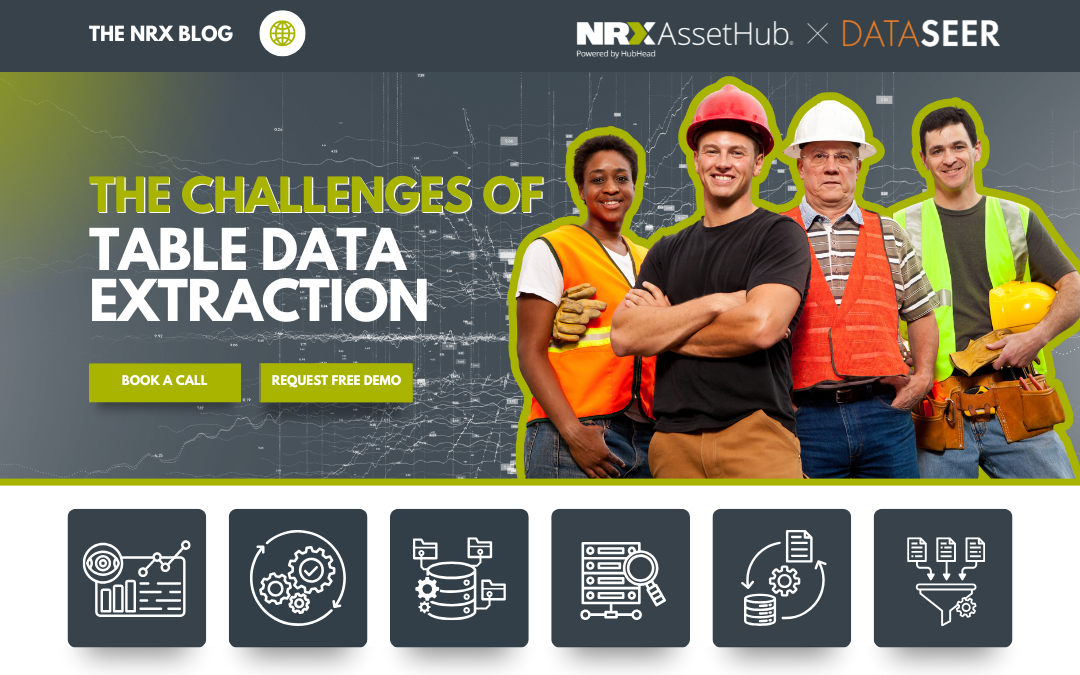The challenges of extracting table data from technical documents are significant in industrial environments, where critical information is often embedded within dense, tightly packed tables. These tables may include parts lists, equipment specifications, material quantities, or cost estimates. While they hold essential data for asset management, accessing and utilizing this information is often a complex task.

Why Table Data is Vital for Asset Management
Tables in technical documents are more than just lists; they contain data that informs critical decisions in maintenance, procurement, and planning. For example, a parts list might provide key details like serial numbers, dimensions, and material specifications. If this data is easily accessible, it can streamline maintenance schedules, inventory management, and even future planning. Yet, for many organizations, accessing this information remains a complex challenge.

The Reality of Manual Table Data Extraction
Currently, extracting data from tables in technical documents is often a manual process. Skilled personnel must open, review, and interpret complex, often non-searchable PDFs or scanned images. This process can take hours or days, depending on the data’s complexity, and is susceptible to human error and inconsistencies. The larger and more intricate the dataset, the higher the risk of incomplete or inaccurate data extraction.
This manual extraction isn’t just time-consuming; it also creates a bottleneck that can hinder an organization’s overall productivity. Efficient integration of this data into systems like Computerized Maintenance Management Systems (CMMS) or Enterprise Asset Management (EAM) software is crucial for seamless asset management. Without a streamlined data extraction process, time spent on data entry and validation can delay maintenance activities and operational planning.

Why Extracting Data from Technical Tables is Challenging
Several factors make technical tables particularly difficult to extract:
1. Complex, Unstructured Formats: Unlike tables in spreadsheets, tables in technical documents often have inconsistent structures, merged cells, varying column widths, and non-standard formats. These irregularities make automated extraction challenging.
2. Non-Digital and Non-Searchable Formats: Many technical documents are scanned images or non-searchable PDFs. Without digital text layers, extracting data becomes a labor-intensive tasks.
3. Large Data Volumes: Large projects may involve hundreds or thousands of tables, making manual extraction impractical, especially when time is of the essence.
4. Maintaining Data Accuracy and Consistency: Precise data extraction is critical to prevent errors from entering databases, which could lead to costly mistakes in maintenance schedules, parts ordering, and asset planning.
Given these challenges, it’s clear why many organizations are exploring advanced tools and automation to simplify data extraction. In our next blog, we’ll delve into how automation technology can transform this labor-intensive process, making it more accurate, consistent, and efficient. Stay tuned!

How Can We Help You?
HubHead and DataSeer’s AI Service combines human-level understanding with machine speed to build a scalable knowledge data store of engineering designs. By integrating these solutions with your existing EAM/CMMS systems and creating a digital twin, you can enhance decision-making and streamline your maintenance processes. Contact us for a free demo or book a call.
The Challenges of Sharing, Storing, and Managing Diagram Images
Embracing Automation – The Future of Data Extraction
Extracting Data from Scanned Images and Paper Drawings
Share this article




